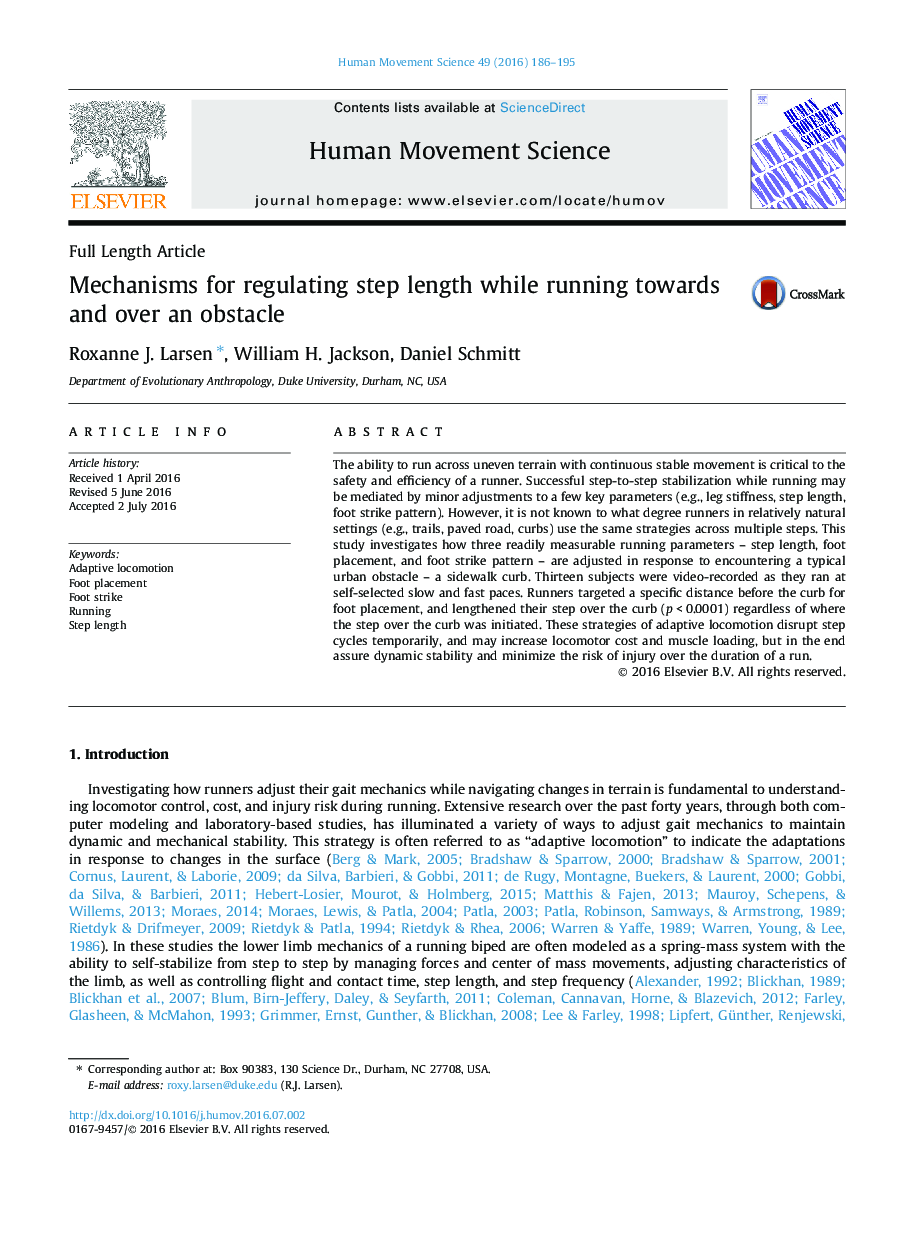| Article ID | Journal | Published Year | Pages | File Type |
|---|---|---|---|---|
| 7291272 | Human Movement Science | 2016 | 10 Pages |
Abstract
The ability to run across uneven terrain with continuous stable movement is critical to the safety and efficiency of a runner. Successful step-to-step stabilization while running may be mediated by minor adjustments to a few key parameters (e.g., leg stiffness, step length, foot strike pattern). However, it is not known to what degree runners in relatively natural settings (e.g., trails, paved road, curbs) use the same strategies across multiple steps. This study investigates how three readily measurable running parameters - step length, foot placement, and foot strike pattern - are adjusted in response to encountering a typical urban obstacle - a sidewalk curb. Thirteen subjects were video-recorded as they ran at self-selected slow and fast paces. Runners targeted a specific distance before the curb for foot placement, and lengthened their step over the curb (p < 0.0001) regardless of where the step over the curb was initiated. These strategies of adaptive locomotion disrupt step cycles temporarily, and may increase locomotor cost and muscle loading, but in the end assure dynamic stability and minimize the risk of injury over the duration of a run.
Related Topics
Life Sciences
Neuroscience
Cognitive Neuroscience
Authors
Roxanne J. Larsen, William H. Jackson, Daniel Schmitt,
